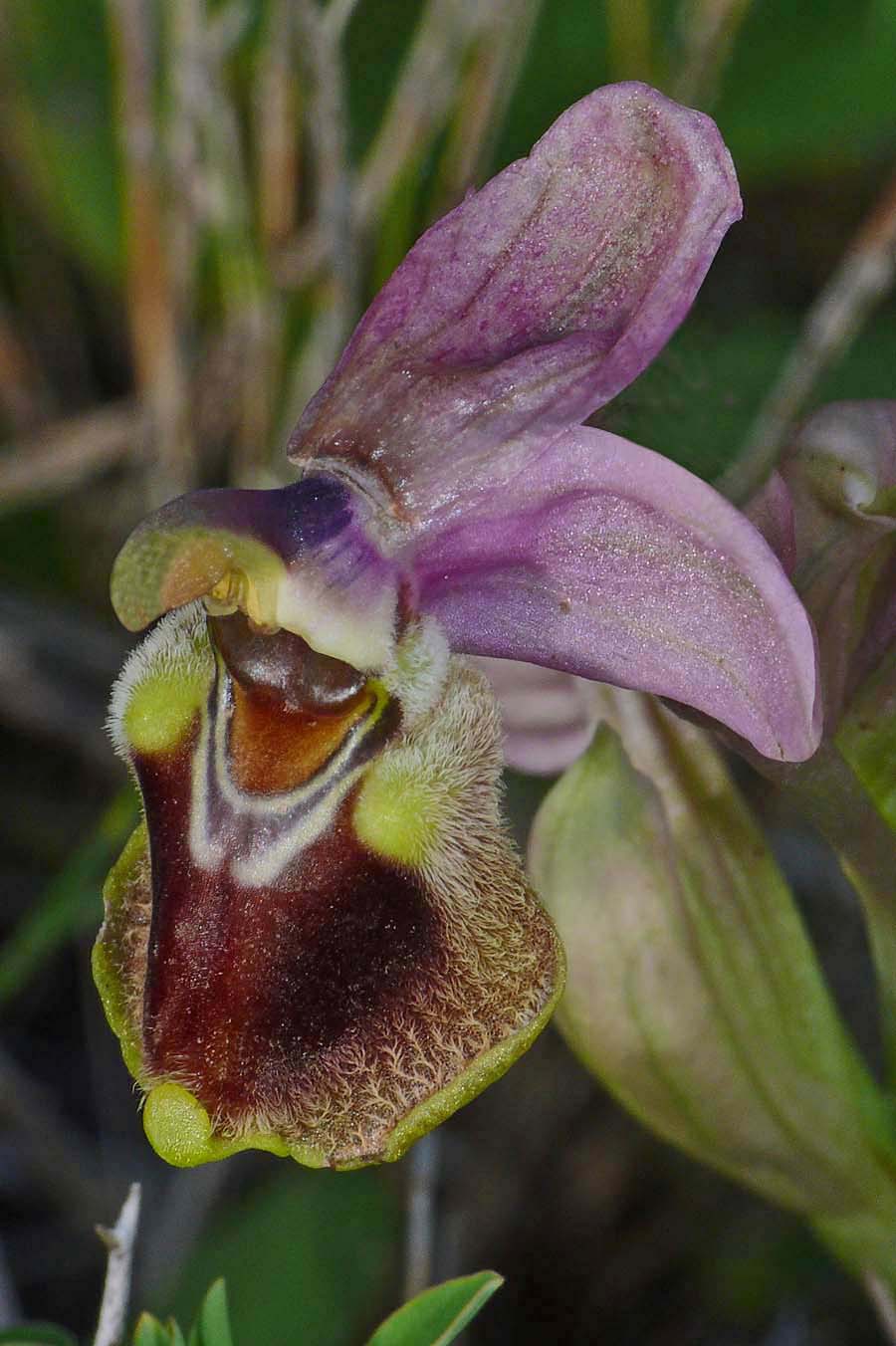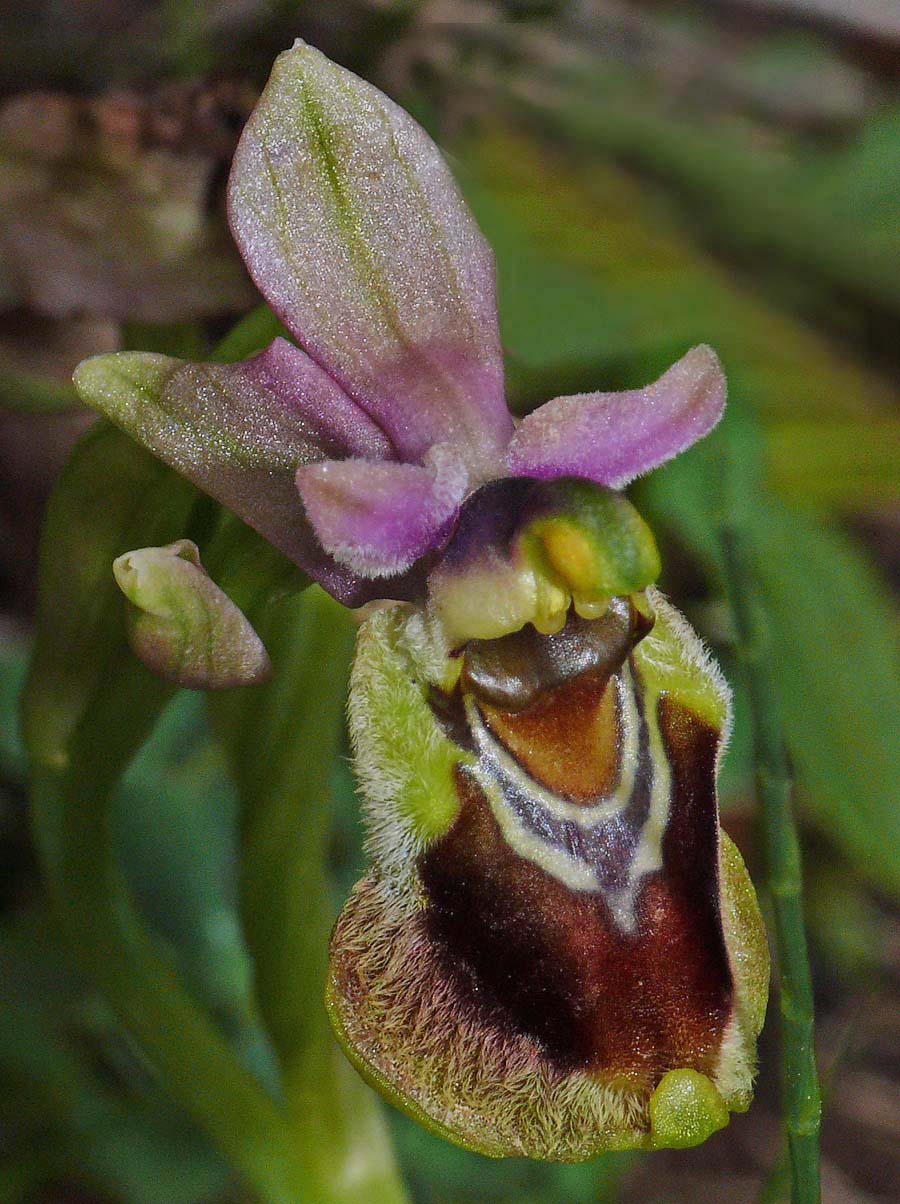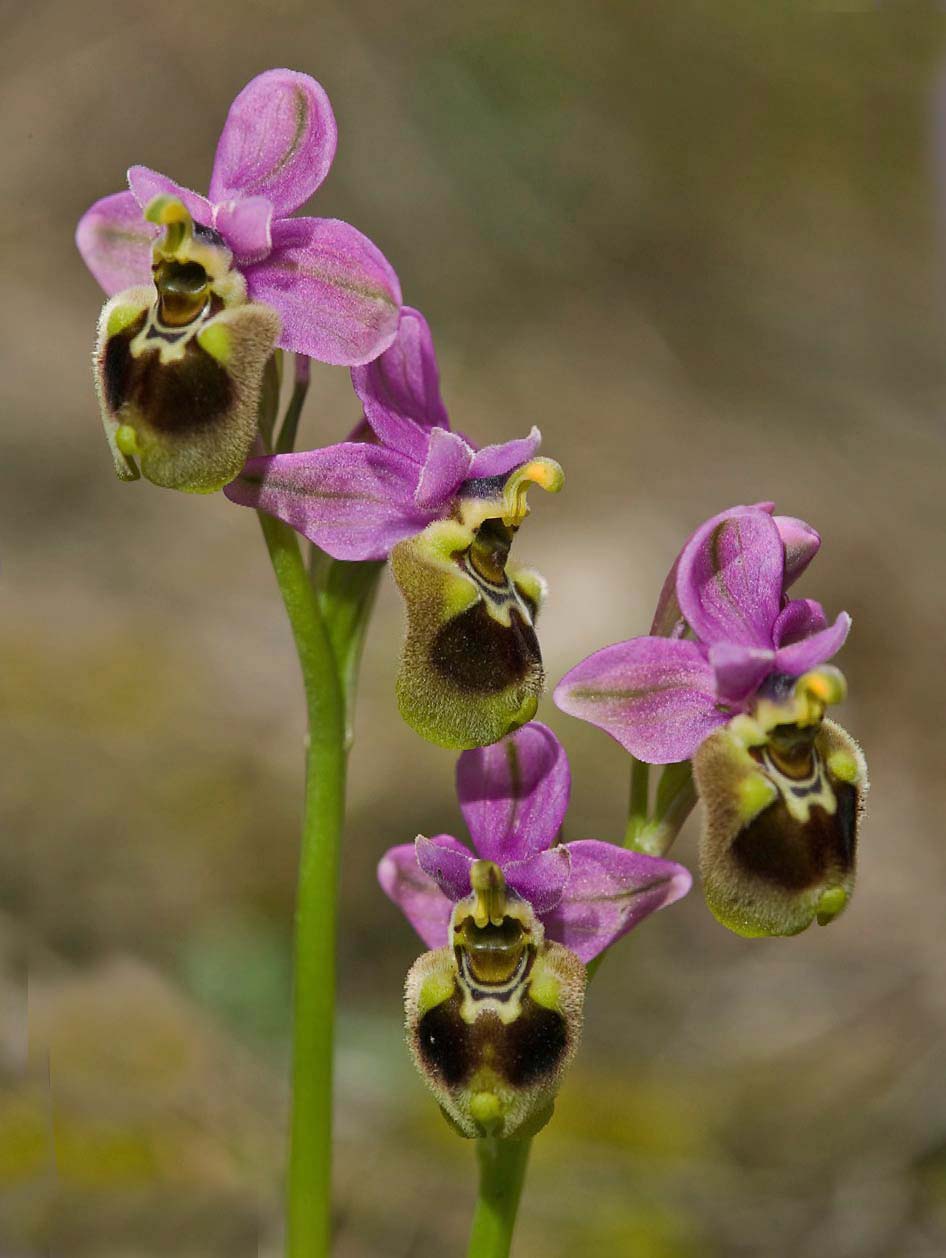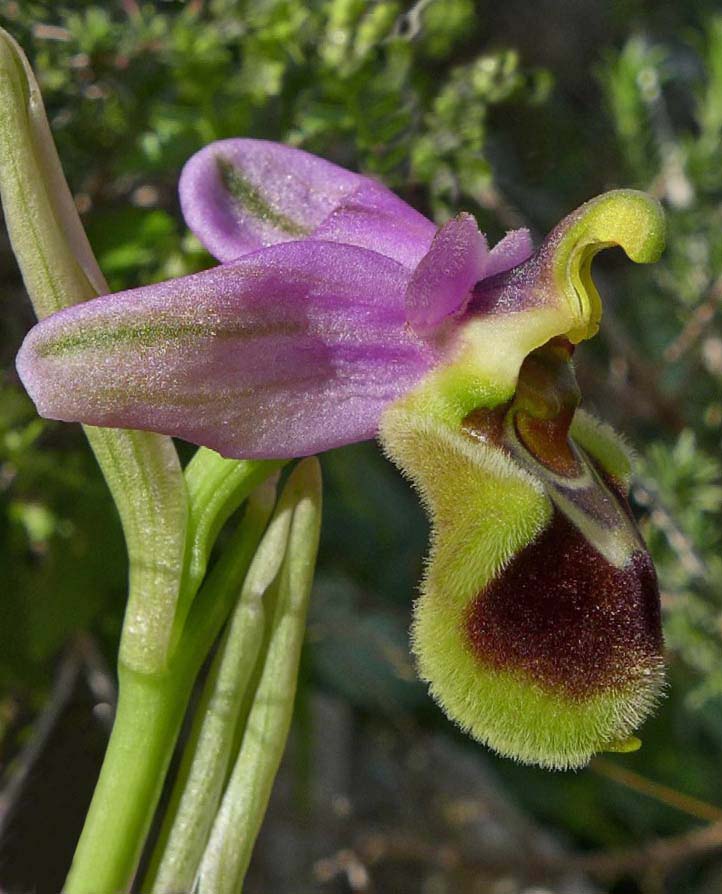O. korae was first described from Rhodes by Paulus and Hirth in 2012 and is an eastern Mediterranean member of the O. tenthredenifera group.
Its name is a reference to Kore, another name for Persephone, wife of
Hades and Queen of the underworld.
Until the beginning of the century this taxon was considered to be within the natural varietal range of O. villosa but several later studies determined that O. villosa is not a single species but a polytipic taxon which has now been split into six additional new species. (O. dictynnae, O. ulyssea , O. korae, O. dimidiata, O. sanctae-marcellae and O. leochroma). O. korae is currently known only from Rhodes and Samos but is suspected to be more widespread through the Aegean archipelago. On Samos it is one of four O. tenthredenifera group species to be found on the island (O. leochroma, O. villosa and O. sancta-marcella) and is frequently found growing in close association with one or rarely all of them.
It is a small flower, similar in proportions to O. villosa and easily confused with that species, particularly as they flower concurrently in February and March. O. korae never has more than four flowers per stem and these tend to radiate from the top of the inflorescence whilst O. villosa produces up to eight flowers spaced closely but evenly up the stalk. There are also smaller morphological differences in that O. korae has narrow, hunched shoulders and generally a less flared lip that is less likely to throw up dark phase specimens. It is to be conceded however that differences can be minimal and distinguishing the two in the field can be difficult. O. leochroma and O. sanctae-marcellae are larger flowered and the former a later flowerer.
O. korae prefers an open position and will happily thrive in semi arid, stony conditions although it can be found in dry, open pine forest, but always on alkaline soils. The pictures are from Samos, dating from the first week of April at which time they were in fast decline.
Until the beginning of the century this taxon was considered to be within the natural varietal range of O. villosa but several later studies determined that O. villosa is not a single species but a polytipic taxon which has now been split into six additional new species. (O. dictynnae, O. ulyssea , O. korae, O. dimidiata, O. sanctae-marcellae and O. leochroma). O. korae is currently known only from Rhodes and Samos but is suspected to be more widespread through the Aegean archipelago. On Samos it is one of four O. tenthredenifera group species to be found on the island (O. leochroma, O. villosa and O. sancta-marcella) and is frequently found growing in close association with one or rarely all of them.
It is a small flower, similar in proportions to O. villosa and easily confused with that species, particularly as they flower concurrently in February and March. O. korae never has more than four flowers per stem and these tend to radiate from the top of the inflorescence whilst O. villosa produces up to eight flowers spaced closely but evenly up the stalk. There are also smaller morphological differences in that O. korae has narrow, hunched shoulders and generally a less flared lip that is less likely to throw up dark phase specimens. It is to be conceded however that differences can be minimal and distinguishing the two in the field can be difficult. O. leochroma and O. sanctae-marcellae are larger flowered and the former a later flowerer.
O. korae prefers an open position and will happily thrive in semi arid, stony conditions although it can be found in dry, open pine forest, but always on alkaline soils. The pictures are from Samos, dating from the first week of April at which time they were in fast decline.



